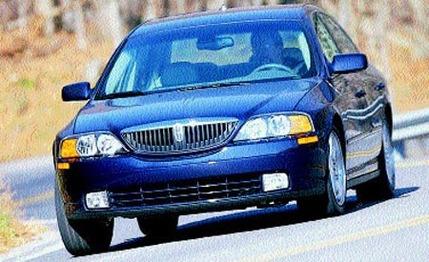
 Long-Term Road Test
Long-Term Road Test
When you last saw this car, it had just completed 10 mille miglias, one after another, in which staffers strafed 15 states, the District of Columbia, and Ontario, Canada, subjecting its leather-lined interior to 183 hours of books on tape, untold fast-food-related aromas, loud music, Spanish lessons, earnest discussion, and canine flatulence. The car did not survive unscathed: On the Ohio Turnpike at night, an unfortunate encounter with a large dog did $2108 worth of superficial body damage.
This unusual 10,000-mile test had been conceived with the Lincoln LS in mind. Our initial encounters with this bold new offering had us thinking Lincoln had come closer than any other American carbuilder to finally producing a true Euro-style road car in the BMW idiom. We were therefore impatient for lasting impressions, morning-after reflections, and serious scrutiny of the sort that is not possible during a press launch or a week-long road test. So we ordered a V-8 LS, in cop-stealthy beige (okay, Light Parchment Gold) with the $1000 Sport package (natch), plus the best CD-equipped stereo system available ($1160). Traction control, heated seats, and luxury tax brought the tab to $38,420.
Then 10 of us each took off for a 1000-mile ride in the Lincoln. Our average speed for those long day trips was 57 mph. At that pace the comments tended to center around seat comfort (hailed almost universally as superb); the effort, feedback, and on-center feel of the steering (exemplary, all); and other long-haul comfort and ergonomic issues (the radio had poor sound clarity and reception, the cruise-control functionality was excellent, and storage space in the cabin was insufficient). Would our impressions change materially when we slowed the pace?
By now, the logbook has been examined, the numbers crunched. Our first impressions, both pro and con, still stand. The lack of space in this relatively large and commodious car rankled users throughout its year-long stay. Like Lexus, Lincoln has mounted its six-disc CD changer in the glove box, where passengers can access it on the fly. But there is barely room remaining for the owner's manual and two rolls of film. Bins in the doors can hold a few maps each, and the center-console bin hasn't room for much more than a couple of Kleenex packs. The 14-cubic-foot trunk is not arranged optimally, either, as Bedard discovered when a new king-size bed comforter failed to fit.
The Lincoln's sport-suspension tuning was judged inferior to that offered by BMW. It relishes a good flog down a twisty stretch, but it sacrifices too much ride comfort on the altars of grip and body-motion control. On the other hand, the roadholding grip (0.81 to 0.82 g) remained within 0.01 g of our BMW 328i long-termer, and braking performance ended up in BMW territory at 175 feet from 70 mph. For a lot less money than that BMW, our Lincoln had V-8 power and a manumatic five-speed, but the Lincoln powertrain couldn't overcome the car's 457-pound weight penalty vs. our 328i. At the track, the LS hit 60 mph in 7.4 seconds, trailing the manually shifted Bimmer by 0.9 second when new, a deficit that shrank to 0.6 second after both cars had run up 40,000 miles. Nevertheless, comments calling this the American BMW cropped up throughout the test.
From first word of this Lincoln's creation, we begged the company to offer a version of it with a manual transmission hooked up to the V-8, and after 40,000 miles with its automatic gearbox, we're even more desperate for a stick. Just tooling around town, the automatic box works fine, but when driving hard, we found it reluctant to kick down, even when shifted manually. The first two gears are too closely spaced, making less than ideal use of its five ratios.